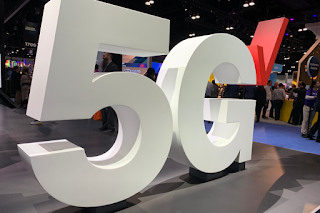The U.S. Department of Defense awarded $600 million in contracts to 15 prime contractors to perform testing and evaluation of 5G technologies at five military installations across the United States.
Five installations, including Hill Air Force Base, Utah; Joint Base Lewis-McChord, Washington; Marine Corps Logistics Base Albany, Georgia; Naval Base San Diego; and Nellis Air Force Base, Nevada, will serve as locations for the application and evaluation of a variety of 5G technologies.
"5G networks — and the technologies that will be built upon them — are an integral component of the National Defense Strategy," said Michael Kratsios, during a teleconference from the Pentagon. "We at the DOD are committed to the advancement of this critical emerging technology to improve the lethality and modernization of our force."
"Outside of the department, in order for private sector companies to test the capabilities and functionality of 5G communications, they face an onerous process — negotiating agreements with state and local officials, attaining pole permits, funding the construction of antennas, and the list goes on," Kratsios said. "At the DOD, we already have the personnel, operational capacity, facilities, scale and regulatory green light to get the job done."
The five Tranche 1 test sites were selected for their ability to provide streamlined access to site spectrum bands, mature fiber and wireless infrastructure, access to key facilities, support for new or improved infrastructure requirements, and the ability to conduct controlled experimentation with dynamic spectrum sharing. For the Tranche 1 locations, prime contractors include AT&T, Booz Allen Hamilton, Deloitte Consulting LLP, Ericsson, Federated Wireless, GBL System Corp., General Dynamics Mission Systems, Inc., GE Research, Key Bridge Wireless LLC, KPMG LLP, Nokia, Oceus Networks, Scientific Research Corporation, Shared Spectrum Company and Vectrus Mission Solutions Corporation.
- In June, the department also announced seven new locations to serve as Tranche 2 test beds for additional 5G capability testing. The Tranche 2 locations include Naval Station Norfolk, Virginia; Joint Base Pearl Harbor-Hickam, Hawaii; Joint Base San Antonio; the National Training Center at Fort Irwin, California; Fort Hood, Texas; Marine Corps Base Camp Pendleton, California; and Tinker Air Force Base, Oklahoma.
https://www.defense.gov/Explore/News/Article/Article/2378047/dod-kicks-off-worlds-largest-dual-use-5g-testing-effort/
 Plenary speaker Jan Kleinert, Research Director at Electro-Scientific Industries (ESI), a division of MKS Instruments, Inc., USA, will share latest innovations in laser based manufacturing technologies in his talk titled “From µs to fs, kHz to GHz: laser micromachining in the microelectronics industry.” Understanding the underlying highly nonlinear laser material interaction dynamics is key to keeping pace with faster, better and cheaper technologies.
Plenary speaker Jan Kleinert, Research Director at Electro-Scientific Industries (ESI), a division of MKS Instruments, Inc., USA, will share latest innovations in laser based manufacturing technologies in his talk titled “From µs to fs, kHz to GHz: laser micromachining in the microelectronics industry.” Understanding the underlying highly nonlinear laser material interaction dynamics is key to keeping pace with faster, better and cheaper technologies.















